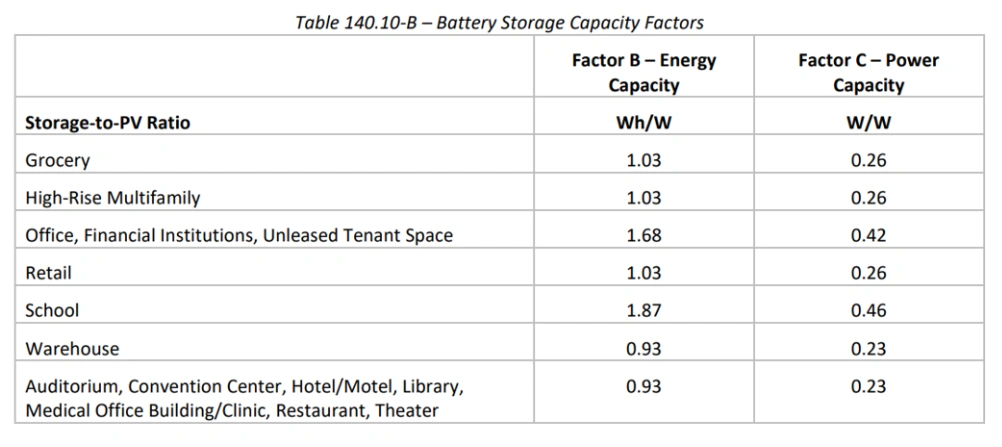Newly constructed commercial buildings in California are now required to add solar and battery storage systems. On January 1, 2023, the California Energy Code instituted the requirement, updating the Building Energy Efficiency Standards for residential and commercial properties, as part of its push to obtain 100 percent carbon neutrality by 2045. The Energy Code is updated every three years, including energy and water efficiency requirements for new buildings and modifications for existing buildings.
Categories of Commercial Buildings Mandated
The Building Energy Efficiency Standards now require the following kinds of new commercial buildings to have a solar array and a battery energy storage system (BESS):
-
Auditoriums
-
Clinics
-
Convention centers
-
Financial institutions
-
Grocery stores
-
High-rise multifamily buildings
-
Hotels and motels
-
Libraries
-
Medical office buildings
-
Office buildings
-
Restaurants
-
Retail centers
-
Schools
-
Theaters
-
Unleased tenant space
-
Warehouses
Sizing Requirements for Solar Photovoltaic (PV) Arrays
Solar requirements depend on the building type, size, and climate zone. The minimum required size of the solar system and the coefficient according to theCalifornia climate zone will determine the sizing requirements for the storage system. Any newly constructed building that is any of the above building types must adhere to the new solar PV and storage system building standards.
The mandated solar and energy storage sizing specifications are detailed below to guide California business owners and project developers. We would also like to note that the state standards below are minimum requirements – local jurisdictions may vary.
-
System size should not be less than the smaller of the PV size determined by Equation 140.10-A (below) or the total of all available Solar Access Roof Areas (SARA) multiplied by 14 W/ft².
-
SARA includes the area of the building’s roof space capable of structurally supporting a PV system and the area of all roof space on covered parking areas, carports, and all other newly constructed structures on the site that is compatible with supporting a PV system perTitle 24, Part 2, Section 1511.2.
Equation 140.10-A
(CFA x A) / 1000
CFA = conditioned floor area in square feet
A = PV capacity factor specified in Table 140.10-A for the building type
Solar PV is not required in the following conditions:
-
the total of all available SARA is less than 3% of the conditioned floor area
-
the required PV system is less than 4 kWdc
-
the SARA contains less than 80 contiguous square feet
-
the building has an enforcement-authority-approved roof design that determines it is not possible for the PV system to meet ASCE-7-16, Chapter 7, Snow Loads
-
a multitenant building is in an area where a load-serving entity does not provide either a virtual net metering or a community solar program
Sizing Requirements for Battery Energy Storage Systems (BESS)
- The rated energy capacity and the rated power capacity shall not be less than the values determined by Equation 140.10-B and Equation 140.10-C.
Equation 140.10-B
kWhbatt = kWPVdc × B / D0.5
kWhbatt = rated usable energy capacity of the battery storage system in kWh
kWPVdc = PV system capacity required by Section 140.10(a) in kWdc
B = battery energy capacity factor specified in Table 140.10-B for the building type
D = rated single charge-discharge cycle AC to AC (round-trip) efficiency of the battery storage system
Equation 140.10-C
kWbatt = kWPVdc × C
kWbatt = power capacity of the battery storage system in kWdc
kWPVdc = PV system capacity required by Section 140.10(a) in kWdc
C = battery power capacity factor specified in Table 140.10-B for the building type
- For multitenant buildings, the energy capacity and power capacity of the ESS shall be based on the tenant spaces with more than 5,000 square feet of conditioned floor area.
A battery energy storage system is not required in the following conditions:
-
the installed PV system size is less than 15% of the size determined by 140.10-A
-
the building has an ESS requirement of fewer than 10 kWh rated capacity
-
a single-tenant building has less than 5,000 square feet of conditioned floor area
-
located in Climate Zone 1
Utilizing the Energy Toolbase Product Suite to Meet CEC Mandate
As developers work to meet these requirements for new construction buildings, there are several things to consider. Solar and energy storage systems must be on theCEC-approved hardware equipment lists and meet the established national safety and performance standards.Acumen EMS™ is integrated directly with several hardware manufacturers, including BYD, Tesla, and Socomec that are on the CEC lists and compliant with the necessary standards. You can find those lists below:
Developers can use theETB Developer platform to model the project economics and savings that solar and energy storage can bring to newly constructed buildings. With the ETB Load Profiler feature, users can generate lookalike reference load profiles in instances where they do not have interval meter data for customers, and synthetically create a 365-day load profile by baselining it against several types of reference load profiles. Users can baseline against any interval meter data they have previously imported. Additionally, there are 16 pre-loaded National Renewable Energy Laboratory (NREL) non-residential load profiles to select from, plus a larger folder of anonymized commercial load profiles to share upon request. To get started using our free solar and energy storage modeling software, sign up for a14-day free trial. No credit card is required.



